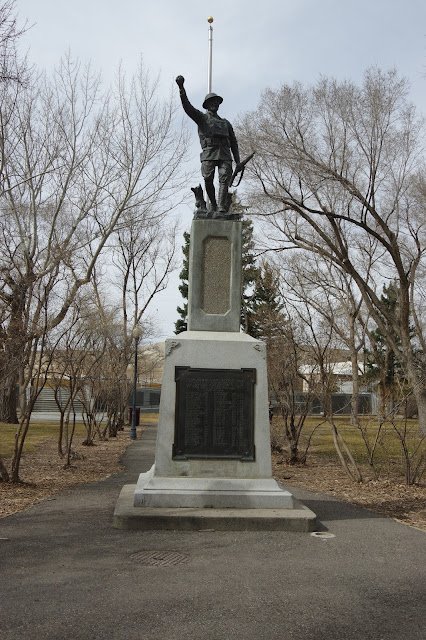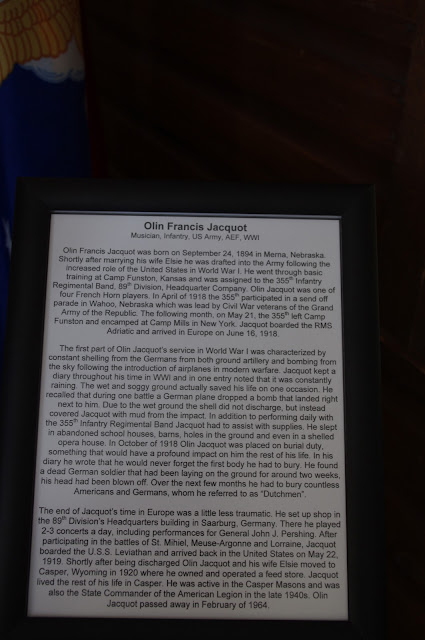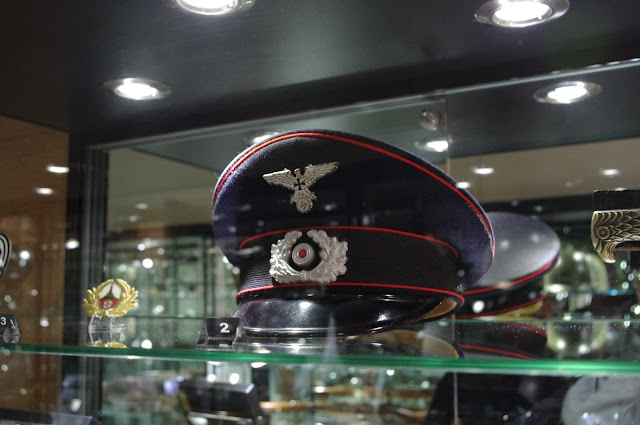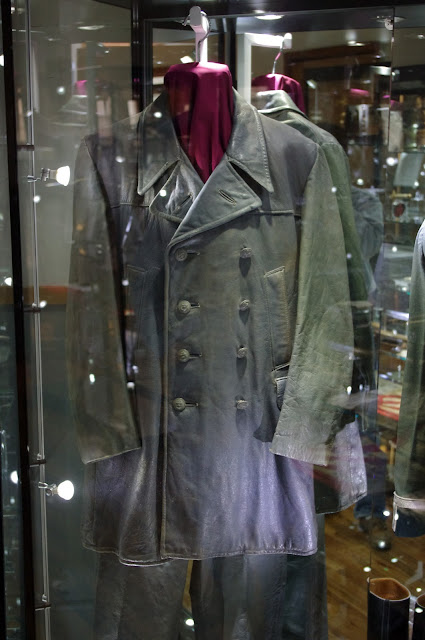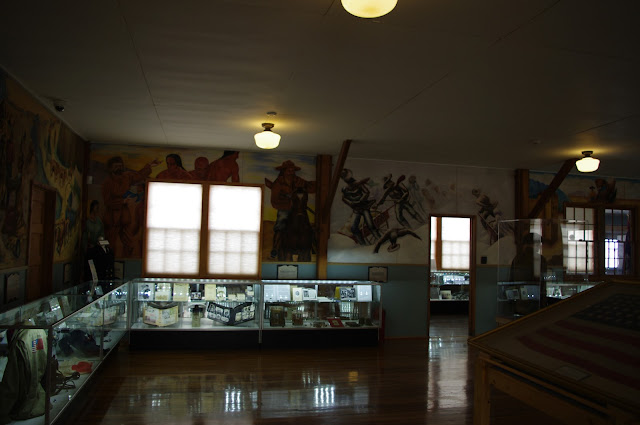Wednesday, May 25, 2016
WHEELS THAT WON THE WEST®: Memorial Day 2016
WHEELS THAT WON THE WEST®: Memorial Day 2016: For many, this coming weekend will offer a respite of sorts; a time to enjoy activities with family and friends, do a little traveli...
Saturday, May 14, 2016
Mormon Battalion Monument, Salt Lake City Utah.
If there's a photo that gives a worse depiction of a monument on this page than this one, I don't know what it is.
However, as a business traveler, and having seen this for the first time, and not knowing when I'll have the opportunity to photograph it again, here's an early morning photograph of the monument to the Mormon Battalion of the Mexican War on the grounds of Utah's capitol.
The unit is unique in that its probably the only religiously based unit to have ever served in US service, although there are other units that can claim to be religiously homogeneous. The unit was raised in a period of extreme tension between the Mormons, which were in the process of relocating to the Salt Lake Valley, and the United States. The thought was that the raising of the volunteer unit would help dispel that.
The unit was raised and did march a very long way to campaign in the war, but it did not see much in the way of actual combat, which is not to say that it did not see any. The monument to the unit is being renovated, and as a result, this photograph only shows that a monument exists, without really given any details.
Tuesday, May 3, 2016
Lex Anteinternet: Blog Mirror: New mystery arises from iconic Iwo J...
Lex Anteinternet: Blog Mirror: New mystery arises from iconic Iwo J...: Interesting article. Apparently Bradley, the author of Flag Of Our Fathers, now agrees. New mystery arises from iconic Iwo Ji...
Thursday, April 7, 2016
World War One, World War Two, and Korean War Memorial: Chugwater Wyoming
This is the memorial for men lost in World War One, World War Two and the Korean War from the tiny town of Chugwater, Wyoming. Chugwater is a very small town in Platte County, although it was probably a little larger during the Great War, World War Two, and the Korean War.
Expressing a unique tragedy, the same name appears on this memorial twice, but as that name was very clearly added for a serviceman of the Korean War after the monument was placed, we would have to assume that this represents two servicemen of the same name, likely father and son.
The memorial is located in a very small park across from the town hall. Oddly, two figures have been added relatively recently which depict current servicemen, carrying M4 carbines. The figures are out of place and sort of resemble the plastic toy soldiers that kids play with and are an unfortunate addition to the memorial.
Sunday, March 13, 2016
Sweetwater County World War One Memorial, Bunning Park, Rock Springs Wyoming
This is the World War One monument in Rock Springs Wyoming. Dedicated to the Sweetwater County fallen in the war, it is located in Bunning Park, which was dedicated by a mayor of the city for which the park is named. Perhaps somewhat ironically, Peter Bunning was German by birth and had served in the German army before immigrating to Denmark, and then on to the United States, where he became a highly successful Sweetwater County businessman.
The doughboy statue itself is of a design that was widely manufactured following the First World War for memorials.
It can't help be noted that there are a surprisingly large number of names on this memorial, given the short amount of time that the United States had troops in action during the Great War, and given that Sweetwater County's population would not have been large.
The doughboy statue itself is of a design that was widely manufactured following the First World War for memorials.
It can't help be noted that there are a surprisingly large number of names on this memorial, given the short amount of time that the United States had troops in action during the Great War, and given that Sweetwater County's population would not have been large.
Saturday, March 12, 2016
The Parting of the Ways
These monuments, within about 100 yards of each other, commemorate the Oregon Trail and the Parting of the Ways, that spot where the Oregon and California Trails diverged. Unfortunately, as the informational sign makes clear, the monument is in the wrong place. The actual Parting of the Ways is about ten miles to the west.
Wyoming Veterans Museum, Natrona County International Airport
This is the Wyoming Veterans Museum in Natrona County, which is located in the former Enlisted Mens Club of the U.S. Army Air Corps base which is now the Natrona County International Airport.
When this museum first opened, I frankly didn't care for it much as it had poor organization and some errors, and some of the displays didn't have a direct bearing on Wyoming, which a museum of this type should. However, the current director was hired, and it really began to rapidly improve. It's been a good museum for several years.
I hadn't been in it for awhile, and when I recently went in it, I was quite impressed. My former complaints about it are no longer valid at all. Its now a nice, relevant, museum.
These photographs do not depict all the displays, and I was really remiss in regards to that. The museum covers the World War One to the second Gulf War. I hope that, in the future, something might be added on the Spanish American War and Philippine Insurrection, but I have no complaints about the museum at all.
Wyoming Veterans Memorial Museum, located in what was originally the Enlisted Mans Club on the Casper Air Base during World War Two.
___________________________________________________________________________________
Olin Francis Jacquot World War One Collection.
Case in which this display is housed, dedicated to World War Two servicemen who trained at the Casper Army Air Field during World War Two.
_________________________________________________________________________________
_________________________________________________________________________________
Casper Army Air Field
.50 BMG cartridges. These can be found all over western Natrona County, left over from WWII. Air crews routinely dumped them out of aircraft.
_________________________________________________________________________________
_________________________________________________________________________________
World War One
Cotton summer uniform of WWI vintage.
Christmas card.
_________________________________________________________________________________
World War Two.
Utility jacket of a "China Marine."
Enlisted dress uniform, USMC.
Dress uniform, United States Army Air Corps.
Display of items from Donald G. Smith, who served in World War One as a bayonet instructor, and in World War Two as a chaplain..
Display of items from Jim Hawkins, who started off in the 115th Cavalry Regiment and ultimatley retired from the Army Reserve as an officer in the 1970s.
Note the spats.
Marine Corps uniforms.

US World War One and interwar type helmet, as painted for Civil Defense use in World War Two.

US M1 helmets and British helmet.

US World War One and interwar type helmet, as painted for Civil Defense use in World War Two.

US M1 helmets and British helmet.
__________________________________________________________________________________
East German, Cold War Era.
__________________________________________________________________________________
Special Display, items brought back by U.S. GI's from World War Two. Axis items.
German Items:
German Army MP gorget, a device worn by MPs in German armed forces, leading to their nickhame of "chain dogs." This one is marked "Feldgendarmerie", or "field police."
SS gorget, for "patrol service." Off to right is a glass item depicting Hitler.

The large item is a Wound Badge, and the small one an Armored Assault badge.

German Youth Day pin, 1935.
Nazi armbands.
Captured Nazi flag, details of capture written on flag.

Hat device, Nazi era German veterans' organization.

Infantry assault badge.

Edelweiss insignia, German mountain unit (Gebergsjaeger).

Collar device, Gebergsjaeger.




Hat device, Nazi era German veterans' organization.

Infantry assault badge.

Edelweiss insignia, German mountain unit (Gebergsjaeger).

Collar device, Gebergsjaeger.



German Nazi era veterans' organization peak cap.
Civil German helmet (Stahlhelm) for civilian policing unit. This is a different model of helmet from that worn by German military units, although the designs were obviously very close.

German M1935 Stahlhelm, according to the data on display this camouflage pattern was associated with desert use.

Luftwaffe M1935 Stahlhelm.

German army M1935 Stahlhelm.

M1918 pattern of Stahlhelm which, according to the information on display, had a latter pattern of interior webbing indicating post World War One use.

M1935 and M1918 Stahlhelms, demonstrating webbing in reflection.


German M1935 Stahlhelm, according to the data on display this camouflage pattern was associated with desert use.

Luftwaffe M1935 Stahlhelm.

German army M1935 Stahlhelm.

M1918 pattern of Stahlhelm which, according to the information on display, had a latter pattern of interior webbing indicating post World War One use.

M1935 and M1918 Stahlhelms, demonstrating webbing in reflection.

Nazi era military and civil daggers and knives.
German Army tunic and Navy submariners deck clothing.
German Kreigsmarine (Naval) sumbariner's deck coat.
German Heer (Army) tunic. This one would appear to be prewar or very early war to me, and does not appear to me.
Epaulet of German army tunic.
Button of German navy deck coat.
German Army boots (jackboots)
Italian Items:

__________________________________________________________________________________
Japanese Items:
Japanese Able Seaman insignia, Japanese Imperial Navy.
Imperial Japanese Army helmet.
__________________________________________________________________________________
Firearms:
U.S. firearms from World War Two, top to bottom. M1 Garand, scabbard for M1 Garand, M1 Carbine and M1903 Springfield.
German double barreled flare pistol.
Japanese Type 26 Pistol.
German P08.
Spanish pistol, likely in German use prior to capture.
German P38
_______________________________________________________________________________
Edged Weapons:
Top to bottom, Japanese Katana (Samurai sword), Prussian cavalry officers saber, Prussian 1889 infantry officers saber.
Prussian Cavalry Officers Saber.
Prussian cavalry officers saber, Prussian 1889 Infantry Officers Saber, Prussian deegan.
Hilt of Prussian infantry officers saber, 1889.
Enlisted Mens Club Murals
__________________________________________________________________________________
Update:
M114 Armored Personnel Carrier, which was recently added to be on display at the museum.
___________________________________________________________________________________
Update.
Updated Vietnam War display:
New Punitive Expedition case:
East German police display:
New photographs of Japanese swords:
Updated Air Base display:
Subscribe to:
Posts (Atom)






